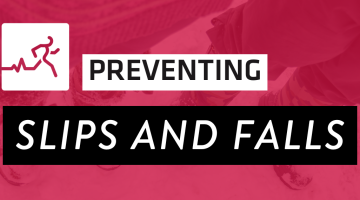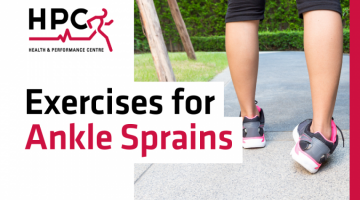Pes Anserinus Tendinopathy Could Be Causing Painful Knees

The pes anserinus consists of the conjoined tendons of the following three thigh muscles: semitendinosus, sartorius and gracilis. Pes anserinus tendinopathy is an inflammatory condition of the bursa (in the knee) associated with the pes anserinus.
What Causes Pes Anserinus Tendinopathy
Pes anserinus tendinopathy arises from repetitive use and overuse of the muscles associated with the cushion (bursa) near the insertion of 3 muscles: sartorius, gracilis and semitendinosus.
Frequent movements that involve bending the knee (flexion) and pulling your hip toward your midline (adduction) can contribute to the development of pes anserinus tendinopathy. These movements cause friction, which increases the pressure on the bursa which inflicts knee pain.
Other causes include direct trauma to the region, as this increases the pressure on the bursa, giving rise to knee pain and tenderness in the area. Osteoarthritis of the knee can also contribute to this tendinopathy. Pes anserinus tendinopathy is more common in overweight, middle-aged females due to increased pressure in the area of insertion of the pes anserinus.
Signs and Symptoms of Pes Anserinus Tendinopathy
Common signs and symptoms of pes anserinus tendinopathy include:
-
Decreased muscle strength
-
Decreased range of motion
-
Altered gait pattern (walking pattern)
-
Impaired lower extremity movement
-
Knee pain associated with pivoting, kicking, and squatting
How is Pes Anserinus Tendinopathy Diagnosed?
Diagnosis of pes anserinus tendinopathy typically involves a clinical examination to detect the location of the pain. Tenderness with palpation (touch) over the pes anserinus tendons is often present.
Additional strategies such as magnetic resonance imaging (MRI) and computed tomography (CT) scans can be utilized to confirm a clinical diagnosis.
Pes Anserinus Tendinopathy Treatments
Practitioners commonly advise individuals to refrain from activity that aggravates and overworks the bursa and surrounding area. This will help to reduce friction and pressure within the region and prevent knee pain.
Cold therapy and non-steroidal anti-inflammatory drugs (NSAIDs) to help reduce inflammation, followed by heat and manual therapy to promote blood flow to the affected area are also used to treat pes anserinus tendinopathy. In order to relax overused muscles surrounding the joint, taping techniques are used to help reduce tension and prevent increased stress on the bursa.
Tips and Tricks for Work-from-Home with Pes Anserinus Tendinopathy
While working from home, take advantage of the extra time to sit around and rest. Avoid any activity which aggravates the bursa until the knee pain has subsided. Applying ice intermittently throughout the day to helps to alleviate swelling and increase blood flow to the affected area.
Our HPC physiotherapists recommend that you take time each day to stretch the surrounding joint muscles including the calf and quadriceps muscles to relieve tension on the knee.
If you are experiencing the signs and symptoms associated with pes anserinus tendinopathy, reach out to us book an appointment with one of our Guelph physiotherapist practitioners at HPC.
References:
Homayouni, K., Foruzi, S., & Kalhori, F. (2016). Effects of kinesiotaping versus non-steroidal anti-inflammatory drugs and physical therapy for treatment of pes anserinus tendinobursitis: A randomized comparative clinical trial. The Physician and sportsmedicine, 44(3),
252–256. https://doi.org/10.1080/00913847.2016.1199251
Knee Rehabilitation Exercises - OrthoInfo - AAOS. Orthoinfo.aaos.org. (2021). Retrieved 15 March 2021, from https://orthoinfo.aaos.org/en/recovery/knee-conditioning-program/knee-pdf/
Mohseni M, Graham C. Pes Anserine Bursitis. [Updated 2020 Nov 26]. In: StatPearls [Internet].
Treasure Island (FL): StatPearls Publishing; 2021 Jan-. Available from: https://www.ncbi.nlm.nih.gov/books/NBK532941/
Plantar Fasciitis and Bone Spurs - OrthoInfo - AAOS. Orthoinfo.aaos.org. (2021). Retrieved 17 March 2021, from https://orthoinfo.aaos.org/en/diseases--conditions/plantar-fasciitis-andbone-spurs.
*About the HPC Student Volunteer Program*
Each year, approximately 30 University of Guelph students are selected following a competitive application process to take part in the “HPC Volunteer Program.” This program provides an opportunity for U of G student volunteers to translate their academic knowledge into practice, while gaining first-hand experience and mentorship from the team of certified physiotherapists and chiropractors at the University of Guelph’s Health and Performance Centre. As a result of this exceptional partnership between the University of Guelph and the HPC practitioners, students can gain valuable insight on evidence-based practice prior to graduating from their respective programs. Click here for more information on co-curricular experiential learning opportunities at the University of Guelph. This article was written by members of the 2021-22 HPC Student Volunteer Program.



